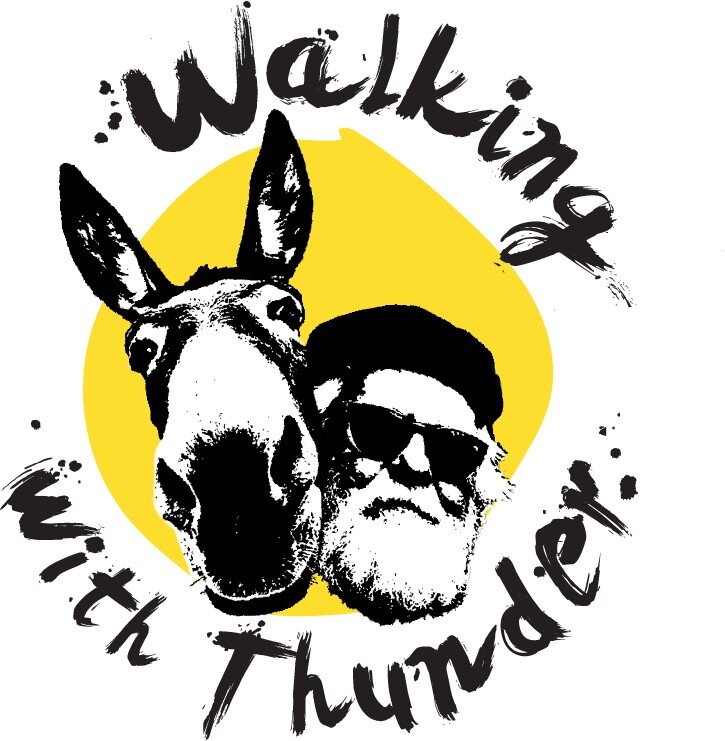Cursive walking
One fact that has continued to remain with me since the event of the most destructive tsunami ever recorded, was that hours before the earthquake in the Indian Ocean that caused the occurrence on December 26, 2004, it was noted that the elephants in Thailand and Sri Lanka began screaming, dogs refused to go outside and wild and domestic animals fled to safety on higher ground.
Beaubien, Conrad. Blue-eyed grass along Kaiser crossroad. Watercolour. 2021.
The human devastation along the coastline was immense yet few animals were harmed. It is also recorded that chemical changes to groundwater before an earthquake will cause toads to abandon their ponds; minor changes in electromagnetic fields before volcanoes and storms are also part of an early warning system for animals that will even prompt sharks to head to deeper waters.
Our most proximity of environments, the natural world that encompasses us, is in constant flux and our animal, bird and insect friends have their ear to the ground so to speak, are in tune with the smallest of changes and respond accordingly. Reminders of their abilities of insight are also reminders of the general insularity of human senses when it comes to ties to the natural world. Though the rock beneath our feet is in constant flux and as underground rivers and streams run steady, still our purview is limited. Our physical movement, especially in open spaces however allows for grandeur realizations.
As I trek the pathway nearby Trumpour’s marsh this early morning, and watch how a grass snake and later on three green frogs cross my path, somehow I manage to tie in the idea of walking and writing, cursive writing to be exact. The fact that cursive writing is no longer taught in school is an example of how we continue to alienate ourselves from our inherent instincts that connect us to our settings. We often work and live in silos of the imagination allowing ourselves to be restricted to our immediate knowledge without importing influences from varied disciplines that can help make up the whole, a holistic outlook.
The word cursive derives from the Latin currere which means to run. As we write, letters run into one another and the hand runs or courses across the page never letting up between letters. Symbols are written in a conjoined, surging manner which is important for spelling skills and recognition. This is the opposite effect of printing or typing which as a mechanical orientation, doesn’t require the same fine motor skills and activity.
Cursive writing has the ability to free the mind from the workings of typing and encourages focus on content and fluency while nurturing idea generation. Cursive writing can feel like walking in the sense that our feet on the ground offer calming, similarly to how allowing letters to drift freely across the page opens possibilities for hand/eye/soul connection. We can be unbound and aboard the open range of the sheet. All of this is why there are direct connections between walking, writing and thought influences that inspire or have inspired creators past and present.
Walking in the landscape and in the company of a sentient being like a donkey, for me adds one more layer. The inert reflex as a human to want to offer verbal commentary as our surrounds are evaluated and perhaps with the idea of soliciting response is not going to happen with my donkey pal Thunder. Yet I know that he knows. The walking/silence/mindfulness aspect of having the earnest company of an animal friend conjures unspoken reflection and inner dialogue. I am training to pay attention to that which is beyond my mortal senses as I focus more and more on the awareness traits that Thunder expresses, his having evolved to higher degrees and in most cases, honed toward well being of species.
Walking in concert with the imbued songs of the outdoors and in the slow tempo of six feet on the ground - me and my friend Thunder - offers a heightened state of being. Body movement becomes comparable to the flow of ink from my trusted fountain pen as it eases my hand in transit over the blank page, the ethers being the trade winds that propel us.

